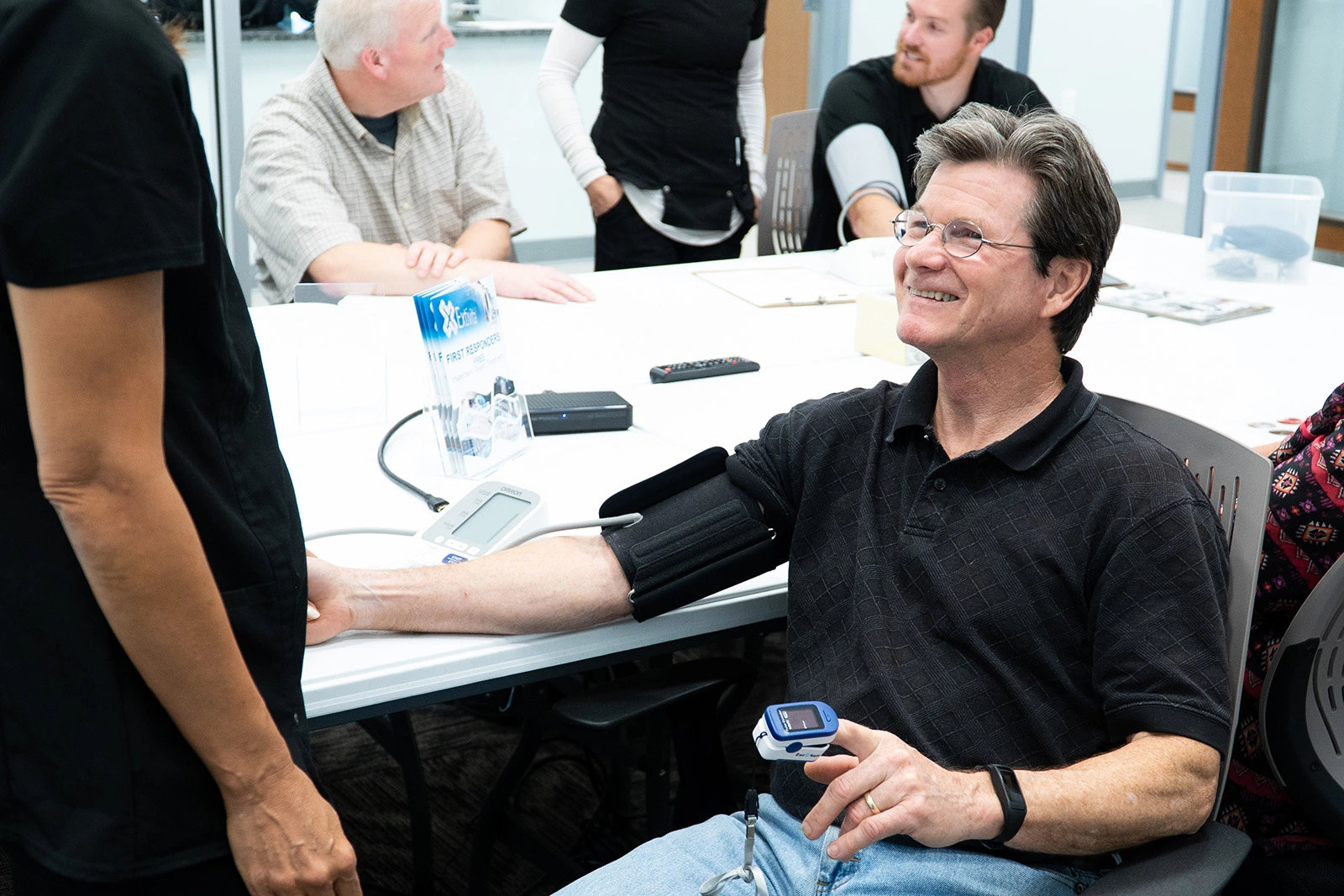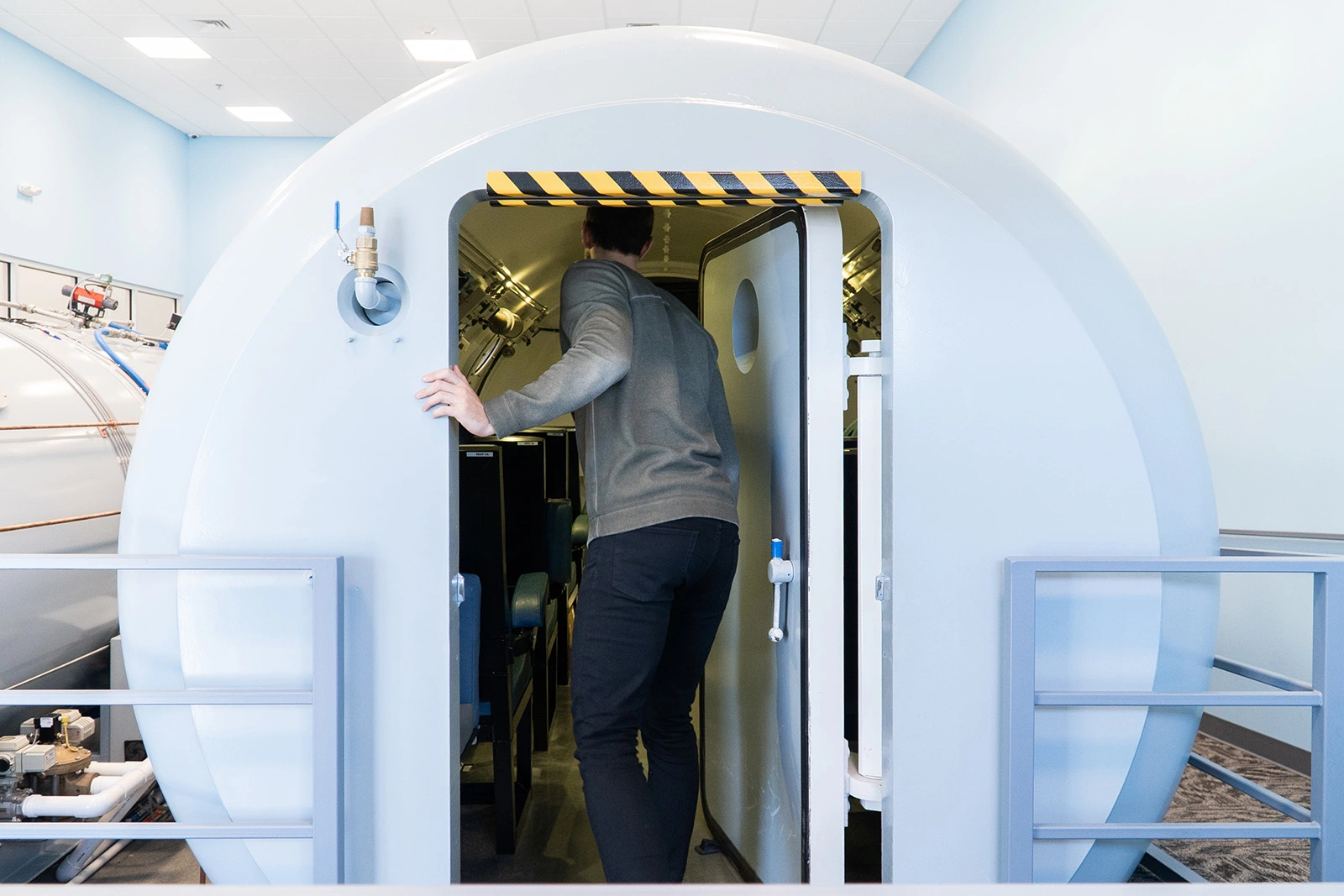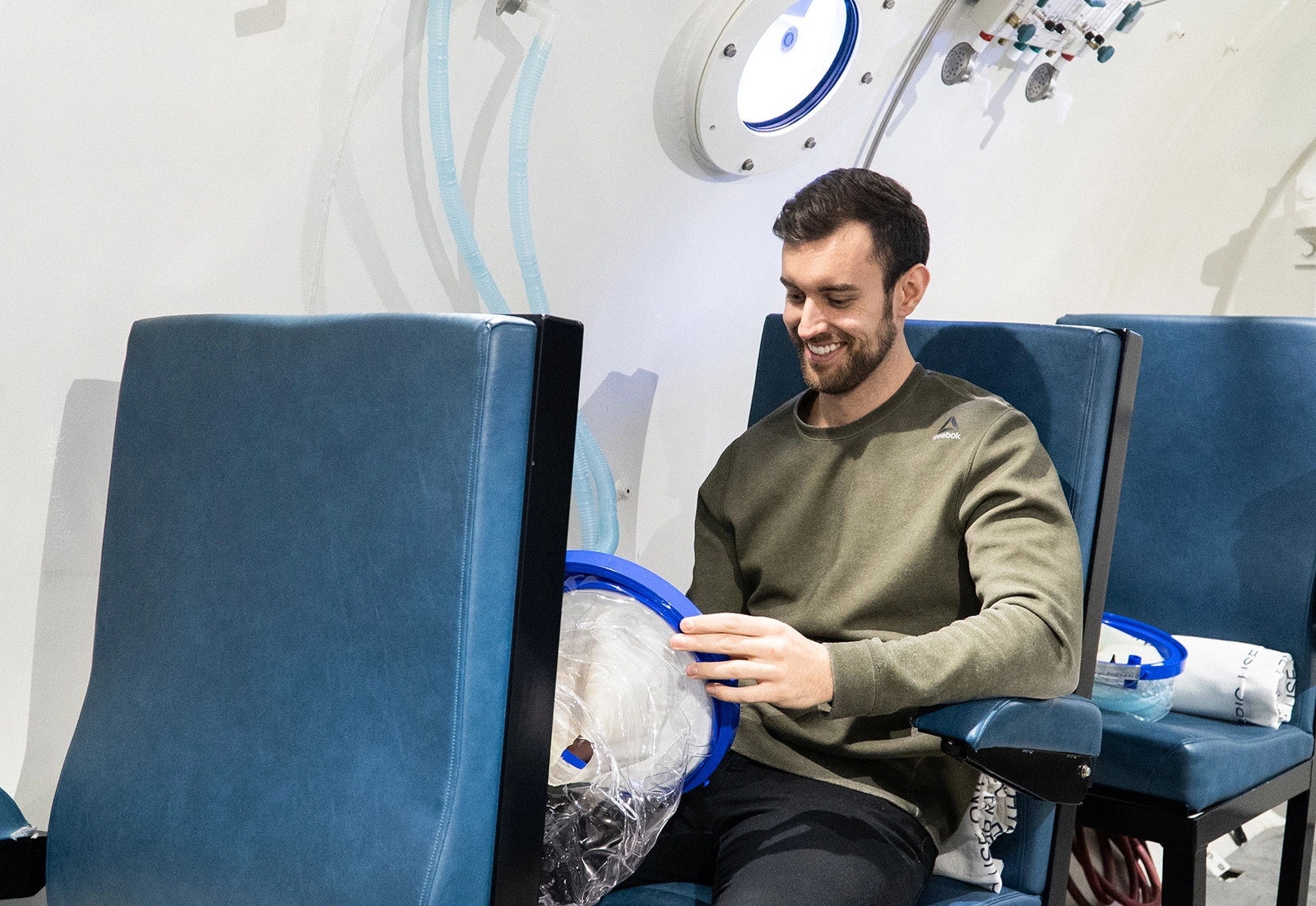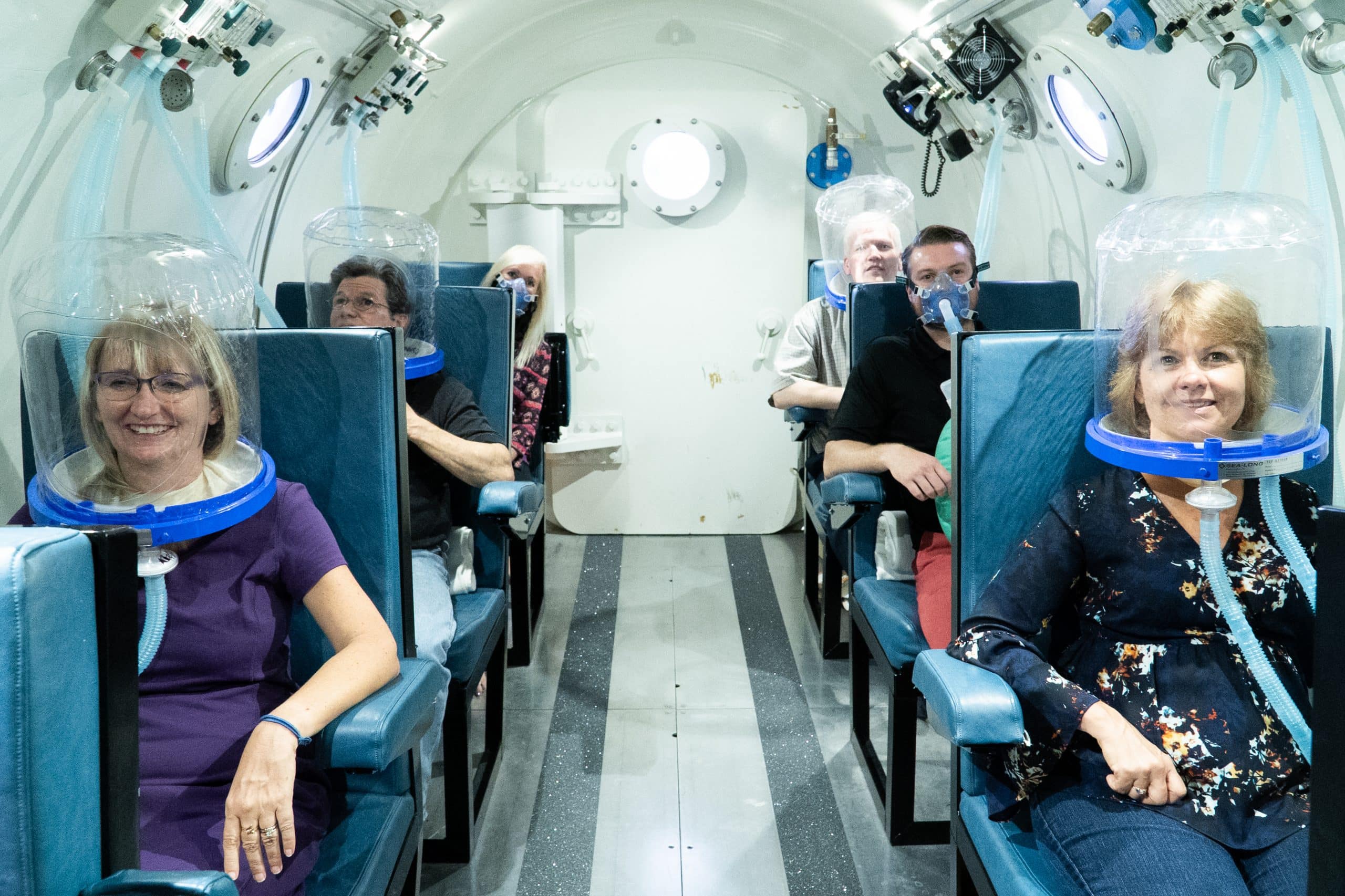Experience the Healing Power of Hyperbaric Oxygen Therapy
Non-invasive, drug-free therapy to enhance your body’s natural healing processes.
What is Hyperbaric Oxygen Therapy?
Hyperbaric Oxygen Therapy, also known as HBOT, involves breathing 100% oxygen in a pressurized chamber to increase oxygen levels in blood plasma.
A century of clinical research has shown oxygen under pressure:
- Increases oxygen in plasma accelerating our natural ability to heal
- Regulates 8,101 of approximately 20,000 total genes
- Upregulates anti-inflammatory genes
- Downregulates inflammatory genes
- Mobilizes stem cells and growth factors associated with the body’s regenerative and reparative processes
Outside the United Sates, HBOT is used to extend and improve quality of life by augmenting the treatment of injuries, diseases, and infections as well as improving overall wellness and physical performance.
The FDA has cleared the use of HBOT for 14 indications including wounds, carbon monoxide poisoning, burns, osteomyelitis, radiation injury to name a few. The National Institute of Health (NIH) lists over 400 ongoing clinical trials for the use of hyperbaric medicine covering the treatment of most diseases and conditions such as stroke, cancer, ulcerative colitis, alzheimer’s, parkinson’s, multiple sclerosis, chronic fatigue, fibromyalgia, and traumatic brain injuries. For a complete listing, visit the NIH Clinical Trials website.
Why Choose HBOT at Extivita?

New Blood Vessel Formation
Hyperbaric oxygen therapy simulates the formation of new blood vessels, healing injured tissues that were unable to get nutrients and oxygen.

Increased Stem Cell Activity
Hyperbaric oxygen therapy mobilizes stem progenitor cells (SPCs) from the bone marrow, creating the opportunity for tissue regeneration.
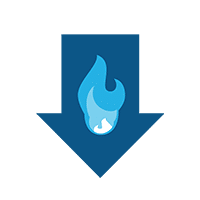
Decreased Inflammation
Hyperbaric oxygen therapy reduces systemic inflammation by increasing anti-inflammatory gene expression and decreasing proinflammatory genes.

Antibacterial & Antimicrobal
Hyperbaric oxygen therapy has been shown to target infections and harmful bacteria, both directtly and as a sipplement to conventional antiobiotics.
Why Choose HBOT at Extivita?
HBOT’s therapeutic range is vast due to its positive effects on several key systems, especially the circulatory, immune, and regenerative systems. By targeting these systems, HBOT can effectively improve a wide range of conditions and enhance general health and wellbeing.
Scientific Insights:
- Increases oxygen levels in blood plasma, accelerating natural healing processes
- Regulates over 8,000 genes, promoting anti-inflammatory responses
Mobilizes stem cells and growth factors for tissue regeneration
Schedule Your Free Wellness Visit →
How Hyperbaric Oxygen Therapy Works
Your body already knows how to heal—HBOT simply fuels the process.
When you receive HBOT, you breathe 100% medical-grade oxygen in a pressurized chamber. This process increases oxygen delivery to your tissues by up to 1200%, allowing oxygen to reach areas that are otherwise difficult to treat.
This elevated oxygen triggers powerful biological changes, including:
- Regulation of over 8,000 genes
- Increased cellular energy (ATP)
- Reduction of inflammation
- Enhanced tissue repair and immune function
Watch the videos below to see how HBOT works at the cellular level.
New Blood Vessel Formation
HBOT has been shown to stimulate the growth of new blood vessels through angiogenesis and vasculogenesis. These processes improve circulation and help oxygen and nutrients reach damaged tissue that wouldn’t heal otherwise.
Increased Stem Cell Activity
Hyperbaric oxygen dramatically increases the release of stem progenitor cells from bone marrow. These regenerative cells migrate to damaged areas, supporting tissue repair and overall healing.
Decreased Inflammation
HBOT downregulates inflammatory genes (like IL-1 and IL-6) and upregulates anti-inflammatory genes. This reduces pain, swelling, and tissue damage caused by chronic inflammation.
Antibacterial & Antimicrobial
Reactive oxygen species (ROS) produced during HBOT have direct antimicrobial effects. They damage bacterial cells, suppress infection, and enhance the effectiveness of certain antibiotics.
HBOT stimulates biological effects by increasing reactive oxygen species (ROS) and reactive nitrogen species (RNS), which help regulate thousands of genes that impact healing, immunity, growth factors, and more.
Conditions That May Benefit from HBOT
HBOT can be used to support recovery from various medical conditions, enhance wellness, and improve quality of life. Some of the conditions that may benefit include:
- Alzheimer’s Disease
- Autism Spectrum Disorder
- Cognitive Decline & Dementia
- Concussions & Mild TBI
- Fibromyalgia
- Healthy Aging
- Inflammatory Bowel Disease (IBS)
- Lyme Disease & Chronic Lyme’s Disease
- Osteoarthritis
- Peripheral Neuropathy
- Post-Operative Healing
- Post-Traumatic Stress Disorder (PTSD)
- Spinal Cord Injury (SCI)
- Stroke
- Traumatic Brain Injuries (TBI)
- Wound Healing
For a comprehensive list of conditions please visit our conditions we treat page.
Understanding the HBOT Process
At Extivita, HBOT sessions are conducted in a comfortable, state-of-the-art hyperbaric chamber. During treatment:
- Preparation: You’ll be seated in the chamber and fitted with a mask or hood to breathe pure oxygen.
- Pressurization: The chamber gradually pressurizes to between 1.5 and 2.5 times normal atmospheric pressure, enhancing oxygen absorption.
- Treatment: Sessions typically last about 60 minutes, during which you can relax, read, or listen to music.
- Completion: The chamber is slowly depressurized, and you can resume normal activities immediately afterward.
Getting Started with HBOT at Extivita
Take a Look Inside: A Guided Tour of HBOT at Extivita
Join our Nurse Practitioner for a behind-the-scenes look at what you can expect during your HBOT experience—from your first wellness visit to stepping into the chamber.
Step 1: Free Wellness Visit
Schedule a free personalized wellness visit with one of our wellness coordinators. In this visit, we’ll review your health history, discuss your goals, and introduce you to our therapies. If HBOT is of interest, we’ll help you understand how it may fit into your wellness journey and outline the next steps.
Step 2: Medical Consultation & Prescription
Because Hyperbaric Oxygen Therapy requires a prescription, you’ll meet with our licensed medical provider for a dedicated medical appointment. This includes a more in-depth review of your health status and medical history, and—if appropriate—a prescription will be issued to begin HBOT.
Step 3: Personalized Treatment Plan & Therapy
Once cleared, our team will create a customized HBOT treatment plan tailored to your specific needs. You’ll then begin your sessions under the supervision of trained staff, with regular assessments to track progress.
Schedule Your Free Wellness Visit →
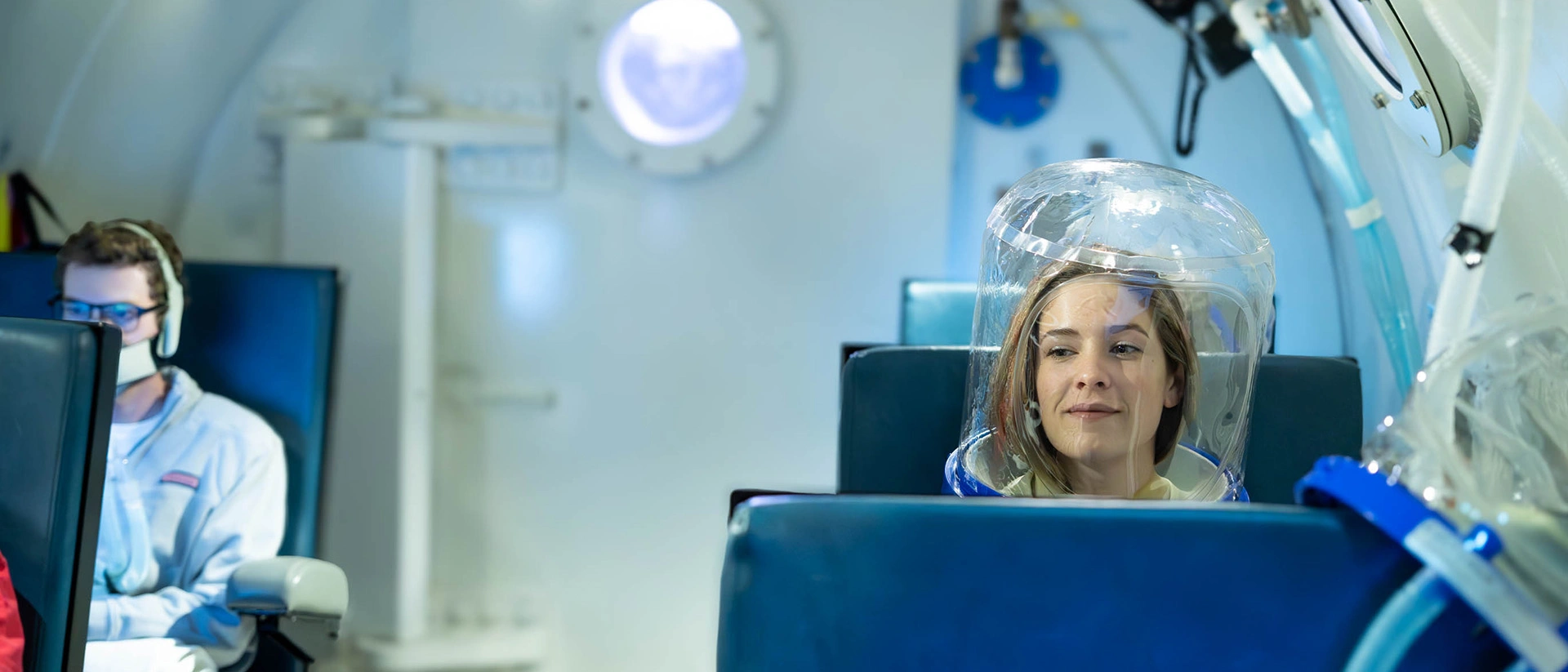
HBOT Packages at Extivita
We offer a variety of Hyperbaric Oxygen Therapy (HBOT) packages to meet your treatment needs, whether you’re just getting started or following an ongoing plan.
Not Sure Where to Start?
Try HBOT and see how it may improve your condition or overall quality of life. Our Introductory HBOT Package is the perfect first step and includes:
- 3 full HBOT sessions
- A loaner hood
- Chamber-approved headphones
- A required medical consultation with our licensed provider to review your health history and issue a prescription for HBOT, if appropriate
Note: A medical prescription is required before beginning HBOT. Your consultation is included in the package price.
Schedule Your Free Wellness Visit →
Frequently Asked Questions
Is HBOT safe?
Yes, HBOT is a non-invasive therapy with a strong safety record when administered by trained professionals.
How many sessions will I need?
The number of sessions varies depending on individual health goals and conditions. Our team will recommend a plan tailored to your needs.
Will I feel anything during the session?
Can I resume normal activities after a session?
Yes, there is no downtime required after HBOT sessions.
How do I get started with HBOT (new patients)?
Before you come into the clinic, you will need to register as a patient in our patient portal. Here you will enter your medical history and primary reason(s) for starting HBOT. When you complete the portal registration, you will then be able to schedule a consultation with Elena Schertz, FNP to obtain your oxygen prescription. Because oxygen is considered a drug by the FDA, patients must obtain a prescription from a licensed healthcare professional for these therapeutic treatments. The specific pressure for your HBOT treatment is also included in the prescription.
After the consultation, your HBOT journey begins!
Review our Welcome Letter for more information.
How is HBOT administered?
All Extivita patients have their very own hood or mask through which 100% medical grade oxygen is administered. These will be provided after your consultation.
The combination of oxygen and pressure is what creates a Hyperbaric Oxygen Therapy environment. The majority of our dives at Extivita are at a 2.0 ATA, which is the equivalent of being 33 feet below surface level; hence why the industry uses the term “dive” when referring to a HBOT treatment.
What type of HBOT chambers do we use?
At Extivita we have two hard-shell, multi-place chambers. Our biggest chamber can seat up to 12 patients, while our smaller chamber can seat up to 8 patients. We are a NFPA compliant facility; meeting all necessary safety rules and PVHO mandates required for clinical HBOT operation in North Carolina.
It’s important to know there are two types of chambers (hard and soft shell) that administer HBOT in the Health & Wellness industry. There are physical and therapeutic differences between them both, and different states enforce different mandates. In North Carolina, the PVHO (Pressure Vessels for Human Occupancy) mandate is enforced for every operational clinical hyperbaric chamber in the state. Mild HBOT or mHBOT chambers that are “soft-sided” are not compliant with ASME PVHO-1 or NFPA 99.
To learn more on the importance of this information, reference –
What is the Difference Between Hard & Soft Shell HBOT Chambers
Why PVHO Mandates are Enforced in 11 States for Hyperbaric Oxygen Therapy
What can I do while in the HBOT chamber?
Whether it’s reading, watching a movie, or sleeping, there is plenty to do during your HBOT session. All of our chambers have a tablet at each seat, and we provide free chamber-approved headphones! If you want to watch movies or shows on your personal streaming account (like Netflix, Disney+, etc), just be sure you have your login information handy. You are also more than welcome to bring your own book to read during treatment, or a small pillow for catching up on some sleep. We provide blankets to all patients.
No newspapers or cell phones are allowed in the HBOT chambers
Will I be by myself during my HBOT session?
There will always be a trained Extivita dive tender with you during your HBOT session. While you may be the only patient in the chamber on some days, most sessions will have other patients in the chamber with you.
How long does an HBOT session last?
Most HBOT sessions will last roughly 1 hour and 30 minutes, which includes the time it takes to pressurize the chamber, 1 hour at the prescribed depth, and the time it takes to depressurize the chamber. Certain conditions may require shorter or longer durations at depth.
What is a covered versus a non-covered condition?
Covered conditions are conditions that have been approved by the FDA for HBOT. There are currently 13 covered conditions in the U.S. including carbon monoxide poisoning, burns, osteomyelitis, and radiation injuries to name a few. If you fall into any of these categories and would like to try to be reimbursed for HBOT treatment by your insurance provider, please let us how we can help support you with a self-claim.
Non-covered conditions are conditions that have large bodies of research and patient experiences in support of HBOT as an effective therapy. Many of our patients receive treatment for non-covered conditions (also known as “off label” treatment). For a full list of the conditions we treat at Extivita, visit our Conditions page. Additionally, the National Institute of Health (NIH) typically has hundreds of ongoing clinical trials for the use of hyperbaric medicine covering the treatment of conditions such as stroke, cancer, ulcerative colitis, Alzheimer’s disease, Parkinson’s disease, multiple sclerosis, chronic fatigue, fibromyalgia, and traumatic brain injuries. For a complete listing, visit the NIH Clinical Trials website.
How many HBOT treatments will I need?
This depends on the condition that you are receiving treatment for, as well as how your body responds to HBOT. The antioxidant and anti-inflammatory effects of HBOT can typically be felt within the first few sessions.
Some post-COVID Long Haulers or patients who are using HBOT within days of a head injury for concussion healing can feel the positive results in as little as 3-5 treatments. Benefits for acute injuries and soft-tissue damage can typically be seen in 5-10 sessions, while chronic injuries typically require 10-20 sessions. Many conditions require 20-40 HBOT sessions for full healing effects such as stem cell increase. During your consult, Elena Schertz will provide you with a suggested HBOT dive schedule to help you achieve optimal healing.
Are there any side-effects to HBOT?
HBOT is generally considered one of the safest therapies in use today. Any serious side effects can be prevented by pre-HBOT screening that all patients receive during their consultation. One side effect that is some people experience is mild ear pain while the chamber pressurizes. However, this can be reduced through proper sinus clearing and it typically goes away as you receive more treatments.
Exploring HBOT Research
Globally, Hyperbaric Oxygen Therapy is used to extend and improve quality of life for patients by augmenting the treatment of all injuries, diseases, and infections as well as to improve overall wellness and the physical performance of athletes. Explore our research database to see if HBOT might be right for you!
Schedule Your Free Wellness Visit →
References:
- Bitterman, Haim. “Bench-to-Bedside Review: Oxygen as a Drug.” Critical Care, vol. 13, no. 1, 2009, p. 205. DOI.org (Crossref), doi:10.1186/cc7151.
- Thom, Stephen R., et al. “Stem Cell Mobilization by Hyperbaric Oxygen.” American Journal of Physiology-Heart and Circulatory Physiology, vol. 290, no. 4, Apr. 2006, pp. H1378–86. physiology.org (Atypon), doi:10.1152/ajpheart.00888.2005.
- Thom, Stephen R. “Oxidative Stress Is Fundamental to Hyperbaric Oxygen Therapy.” Journal of Applied Physiology, vol. 106, no. 3, American Physiological Society, Mar. 2009, pp. 988–95. journals.physiology.org (Atypon), doi:10.1152/japplphysiol.91004.2008.
- Godman, Cassandra A., et al. “Hyperbaric Oxygen Treatment Induces Antioxidant Gene Expression.” Annals of the New York Academy of Sciences, vol. 1197, June 2010, pp. 178–83. PubMed, doi:10.1111/j.1749-6632.2009.05393.x.
- Thom, Stephen R. “Hyperbaric Oxygen – Its Mechanisms and Efficacy.” Plastic and Reconstructive Surgery, vol. 127, no. Suppl 1, Jan. 2011, pp. 131S-141S. PubMed Central, doi:10.1097/PRS.0b013e3181fbe2bf.
- Thackham, Jennifer A., et al. “The Use of Hyperbaric Oxygen Therapy to Treat Chronic Wounds: A Review.” Wound Repair and Regeneration, vol. 16, no. 3, 2008, pp. 321–30. Wiley Online Library, doi:10.1111/j.1524-475X.2008.00372.x
- Thom, Stephen R., et al. “Stem Cell Mobilization by Hyperbaric Oxygen.” American Journal of Physiology-Heart and Circulatory Physiology, vol. 290, no. 4, Apr. 2006, pp. H1378–86. physiology.org (Atypon), doi:10.1152/ajpheart.00888.2005.
- Thom, Stephen R., et al. “Stimulation of Perivascular Nitric Oxide Synthesis by Oxygen.” American Journal of Physiology-Heart and Circulatory Physiology, vol. 284, no. 4, Apr. 2003, pp. H1230–39. physiology.org (Atypon), doi:10.1152/ajpheart.01043.2002.
- Aicher, Alexandra, et al. “Essential Role of Endothelial Nitric Oxide Synthase for Mobilization of Stem and Progenitor Cells.” Nature Medicine, vol. 9, no. 11, Nov. 2003, pp. 1370–76. PubMed, doi:10.1038/nm948.
- “CD34+AC133+ Cells Isolated from Cord Blood Are Highly Enriched in Long-Term Culture-Initiating Cells, NOD/SCID-Repopulating Cells and Dendritic Cel… – PubMed – NCBI.” Accessed August 19, 2019. https://www.ncbi.nlm.nih.gov/pubmed/9831864?dopt=Abstract.
- Jiang, Yuehua, Balkrishna N. Jahagirdar, R. Lee Reinhardt, Robert E. Schwartz, C. Dirk Keene, Xilma R. Ortiz-Gonzalez, Morayma Reyes, et al. “Pluripotency of Mesenchymal Stem Cells Derived from Adult Marrow.” Nature 418, no. 6893 (July 4, 2002): 41–49. https://doi.org/10.1038/nature00870.
- Benson, R. M., et al. “Hyperbaric Oxygen Inhibits Stimulus-Induced Proinflammatory Cytokine Synthesis by Human Blood-Derived Monocyte-Macrophages.” Clinical and Experimental Immunology, vol. 134, no. 1, Oct. 2003, pp. 57–62. PubMed Central, doi:10.1046/j.1365-2249.2003.02248.x.
- Thom, Stephen R. “Hyperbaric Oxygen – Its Mechanisms and Efficacy.” Plastic and Reconstructive Surgery, vol. 127, no. Suppl 1, Jan. 2011, pp. 131S-141S. PubMed Central, doi:10.1097/PRS.0b013e3181fbe2bf.
- Godman, Cassandra A., et al. “Hyperbaric Oxygen Treatment Induces Antioxidant Gene Expression.” Annals of the New York Academy of Sciences, vol. 1197, June 2010, pp. 178–83. PubMed, doi:10.1111/j.1749-6632.2009.05393.x.
- Memar, Mohammad Yousef, et al. “Hyperbaric Oxygen Therapy: Antimicrobial Mechanisms and Clinical Application for Infections.” Biomedicine & Pharmacotherapy, vol. 109, Jan. 2019, pp. 440–47. ScienceDirect, doi:10.1016/j.biopha.2018.10.142.
- Çimşit, Maide, et al. “Hyperbaric Oxygen Therapy as an Anti-Infective Agent.” Expert Review of Anti-Infective Therapy, vol. 7, no. 8, Taylor & Francis, Oct. 2009, pp. 1015–26. Taylor and Francis+NEJM, doi:10.1586/eri.09.76.
- Turhan, Vedat, et al. “Hyperbaric Oxygen as Adjunctive Therapy in Experimental Mediastinitis.” Journal of Surgical Research, vol. 155, no. 1, July 2009, pp. 111–15. ScienceDirect, doi:10.1016/j.jss.2008.08.031.

